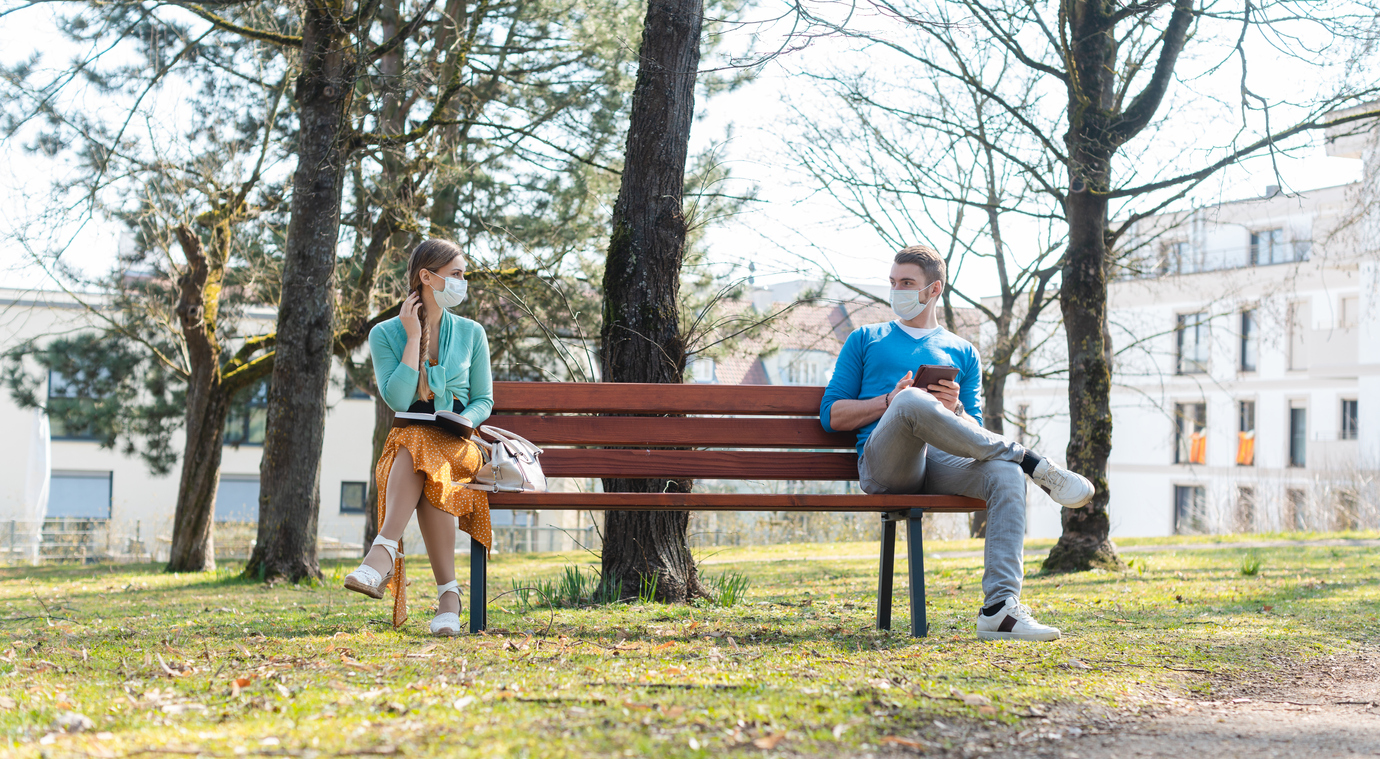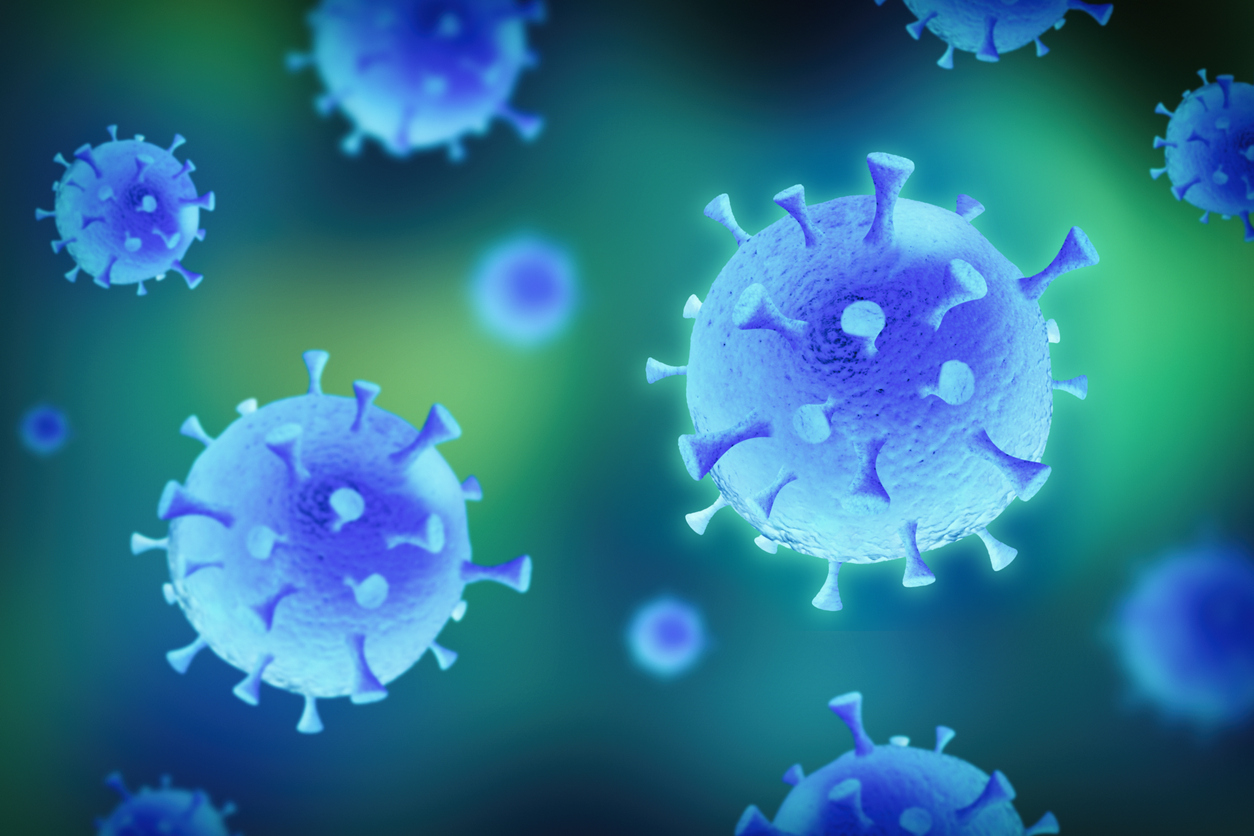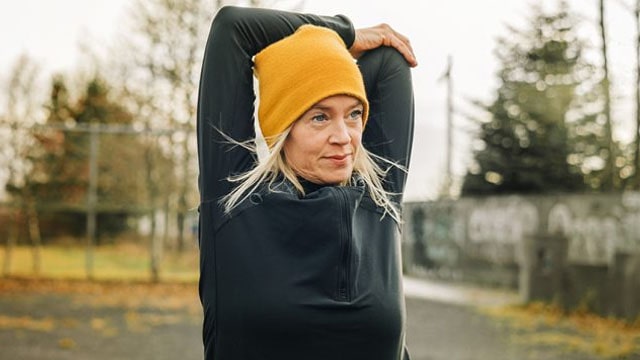If you’re young, fit and healthy you may think that the risk of severe disease and even death from the coronavirus doesn’t apply to you. But data from across the world shows that people of all ages and health levels are being affected - sometimes very seriously.
While the majority of people severely affected by the disease are over the age of 65, younger people are still at risk.
“General health, other conditions, age, sex, even genetics will all influence the severity of the infection” says Jimmy Whitworth, Professor of International Public Health at London School of Hygiene & Tropical Medicine.
“Everybody is at risk, and age alone will not protect you entirely,” he says.
So as lockdowns ease, everyone needs to continue protecting themselves and the people around them.
Who are the most vulnerable groups?
Since the beginning of the outbreak it’s been known that some groups are more vulnerable to the coronavirus than others.
This includes people with conditions or having treatments that affect their immune systems, such as certain cancers and people having chemotherapy, but also people with 1 or more of 12 pre-existing conditions, including heart disease, diabetes, and lung conditions, such as asthma.
Other groups are also considered to be more vulnerable. These include:
- people aged 70 or older
- pregnant women
- people who are obese
But this doesn’t mean that anyone outside of these groups can take it easy.

Young people are not invincible
Symptoms do tend to be milder in younger people overall - and scientists don’t understand why just yet - but reports of the deaths of children and teenagers across the world show that the young are not immune to severe outcomes.
For example, data from the UK’s Office for National Statistics (ONS) shows that just over 87% of deaths from coronavirus in England and Wales up until 24 April were in people over the age of 65 - leaving 13% of deaths in people below that age, which is over 3,300 people.
In the US, which has been hardest hit by the pandemic, around 20% of deaths (more than 7,650 people) were among people under the age of 65 as of 1 May. While the majority of those people were over 55 years old, almost 1,000 deaths were among people aged 25 to 44.
Teenagers and children have also died from the disease.
Many factors are likely to be playing a role here, including access to healthcare, and income and living environments, but the point is still clear: everyone is vulnerable in some way.
Why do some people progress to severe illness?
It’s still not fully understood how the body reacts to the virus, and therefore how severely each person will be affected, so cases vary a lot.
But researchers are exploring the following areas across all age groups, which they believe could be playing a role.
- Your genes
Some researchers believe differences in certain genes could explain why some people with no underlying health conditions develop severe disease.
For example, one gene being looked into is one that controls a protein the coronavirus uses to enter cells in your airways. Differences in this gene could control how easily the virus gets into the cells in your body.
- Your immune system
One recent study found that how a person’s immune system reacts to the virus may help to explain why people tend to react so differently.
Your immune system helps you fight the virus, but in some people it can go into overdrive and cause inflammation and the build-up of fluids. This can block your airways and overwork certain organs such as the liver and kidneys, which could lead to organ failure.
- Viral load
The viral load is the amount of the virus you are infected with and evidence suggests this is likely to be an important factor in deciding how badly a person is affected - the higher the load, the greater the chance of developing severe disease.
Specific research is needed on the impact of high viral loads on young people but studies from China suggest it plays a role.
One study found that higher viral loads may put you at risk of a more severe outcome, while the other found that the virus lasts longer when there’s more of it. Health workers in China were found to have more severe forms of the disease than other people their age.
But while a high viral load could be a sign of severe disease in people both young and old, it’s unlikely to be the only factor.

Keep following the advice
There is still a lot of uncertainty around why people of all ages are being severely affected by the coronavirus - but the point is that the virus has no age restrictions.
So, as lockdowns ease around the world, movement becomes more free and people have to decide their actions, it’s important to know the risks and continue to follow advice on handwashing, physical distancing and whether or not to wear a face mask.
And if you have symptoms or have tested positive for coronavirus, you can use our new COVID-19 Symptom Mapper to check how your symptoms compare with other people around the world.
References:
ONS Coronavirus (Covid-19) roundup [Internet]. Ons.gov.uk. 2020 [cited 5 May 2020]. Available here.
Who's at higher risk from coronavirus - Coronavirus (COVID-19) [Internet]. nhs.uk. 2020 [cited 21 April 2020]. Available here.
Coronavirus: What’s the difference between mild, moderate and severe illness? [Internet]. Your.MD. 2020 [cited 21 April 2020]. Available here.
Ledford H, Gordon D, Jang G, Krogan N, Graham F, Callaway E et al. Comparative genetic analysis of the novel coronavirus (2019-nCoV/SARS-CoV-2) receptor ACE2 in different populations [Internet]. Nature. 2020 [cited 2 May 2020]. Available here.
Viral load dynamics and disease severity in patients infected with SARS-CoV-2 in Zhejiang province, China, January-March 2020: retrospective cohort study | The BMJ [Internet]. Bmj.com. 2020 [cited 2 May 2020]. Available here.
COVID-19: consider cytokine storm syndromes and immunosuppression | The Lancet [Internet]. Thelancet.com. 2020 [cited 2 May 2020]. Available here.
Coronavirus Disease 2019 in Children — United States, February 12–April 2, 2020 [Internet]. Centers for Disease Control and Prevention. 2020 [cited 21 April 2020]. Available here.
Mortality Analyses [Internet]. Johns Hopkins Coronavirus Resource Center. 2020 [cited 21 April 2020]. Available here.
Epidemia COVID-19 [Internet]. Epicentro.iss.it. 2020 [cited 21 April 2020]. Available here.
Severity and outcomes of influenza-related pneumonia in type A and B strains in China 2, Epidemiology p. Expression of the SARS-CoV-2 cell receptor gene ACE2 in a wide variety of human tissues [Internet]. Infectious Diseases of Poverty. 2020 [cited 2 May 2020]. Available here.
Severe Outcomes Among Patients with Coronavirus Disease 2019 (COVID-19) — United States, February 12–March 16, 2020 [Internet]. Centers for Disease Control and Prevention. 2020 [cited 21 April 2020]. Available here.
Viral dynamics in mild and severe cases of COVID-19 | The Lancet [Internet]. Thelancet.com. 2020 [cited 21 April 2020]. Available here.
Are patients with hypertension and diabetes mellitus at increased risk for COVID-19 infection? [Internet]. The Lancet. 2020 [cited 2 May 2020]. Available here.
Viral load dynamics and disease severity in patients infected with SARS-CoV-2 in Zhejiang province, China, January-March 2020: retrospective cohort study | The BMJ [Internet]. Bmj.com. 2020 [cited 27 April 2020]. Available here.
Provisional Death Counts for Coronavirus Disease (COVID-19): [Internet]. Cdc.gov. 2020 [cited 7 May 2020]. Available here. [data as of 1 May]
Coronavirus and immunology Q&A: what you need to know about our new report | The Academy of Medical Sciences [Internet]. Acmedsci.ac.uk. 2020 [cited 5 May 2020]. Available here.
COVID symptoms partly influenced by genetics according to app data [Internet]. Kcl.ac.uk. 2020 [cited 7 May 2020]. Available here.
Internet]. Thelancet.com. 2020 [cited 7 May 2020]. Available here.
Little P, Read R, Amlôt R, Chadborn T, Rice C, Bostock J et al. Reducing risks from coronavirus transmission in the home—the role of viral load. 2020. Available here.






